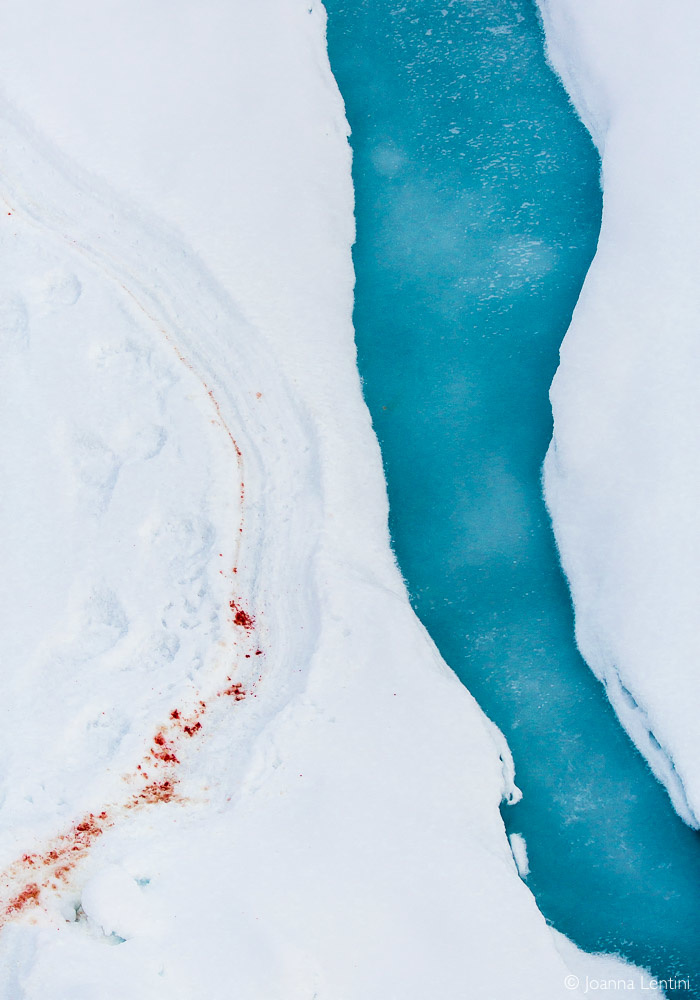Every image has a story behind it, and while some can be more obvious than others, a few also provide important insights from which photographers can learn. In this article, which is the first in a series that I’d like to share with the Fstoppers community, I will explore the story behind one of my most recognized images and one of the most basic rules we are taught when we begin our journey into photography. I hope you will enjoy the series and take something away from my experiences.
As the ice-enforced ship navigated its way through the blood-stained sheets and Arctic fog, the apprehension grew. The predator and its prey were straight ahead. It was early September in the high Arctic and this bear appeared to be somewhat embarrassed by the mess he had made.
The light was poor and the scene quite grotesque, with the little remains that were left of the seal. Yet, everyone snapped away as fast as they could. We were packed along the bow of the ship — shoulder to shoulder, like sardines. Regardless of the limited real estate, and lack of alternative perspectives, I hurried to my cabin on the same level to change lenses. Of course, by the time I stepped back onto the main deck with my 100-400mm, the space I had been shooting from was taken.
Honestly, it wasn’t a huge surprise. I gazed ahead as the wall of photographers clicked away. Feeling a bit defeated, I leaned up against the starboard side of the ship. I tried to reason with myself. I’ve never gotten excited about shooting the same thing 50 other photographers are shooting so I decided to shake it off.
As I tried to let go the self-imposed frustrations I was feeling, my eyes zeroed in on a particular piece of pack ice divided by a turquoise lead. As my focus narrowed onto the polar bear tracks, I realized there was a blood-stained trail beside them that could only have been formed by dragging its prey.
I approached a state of artistic panic as the ship and ice were moving swiftly apart. I knew my chances would be very limited at the speed we were moving. It was a matter of moments before the ice sheet was perfectly lined up with my position on the ship. I fired off a couple of shots before it moved towards the rear of the ship and disappeared into the foggy abyss.
Sure, I could’ve followed it and maybe gotten another shot or two, but I was confident I had accomplished what I needed. I knew it was a powerful shot. Yet it sat on my hard drive for over a year. I decided at the last hour to submit it to the 52nd Annual Wildlife Photographer of the Year competition. It became one of a hundred images that were awarded that year and it was put into a book and traveled the world from one museum to the next.
The image is certainly not for everyone, but I was pleasantly surprised to see how many people with whom it resonated. It just goes to show that that most basic rule of looking where others are not can yield dividends — just try not to sit on the images too long. Get them out into the world for others to see and appreciate.
Some say this image is powerful because it reminds us what we stand to lose. Some day polar bears, ringed seals and sea ice may disappear forever. Images of the natural world serve as a historical evidence of what once roamed this amazing planet. So the next time you take an image of an iconic creature or something as commonplace as a bumblebee do keep that in the back of your mind. And remember to take a moment to look around — you never know what you will find.








What worries me is that if things go on without something been done about it, we may lose our natural heritage and our children will only see these magnificent animals as data.
Don't believe the hype, Polar Bear numbers are the highest they have ever been. Meaning that more Polar Bear's are alive today than there have ever been, at anytime in written history. The problem with Climate Change is weeding out the B.S. from the truth and also the political from the scientific! In some places there is also record ice-pack and levels of Ice in some area's is the greatest it has been in recorded history. Sure there are tons of problems and a lot of truth to climate change, but there seems to be just as much B.S.
"The light was poor and the scene quite grotesque, with the little remains that were left of the seal. Yet, everyone snapped away as fast as they could." You mean, everyone who had paid nearly $10,000 to be there and spot polar bears? Of course they're snapping away as fast as they could, I don't see anything wrong with that, that's why they're there, isn't it? I personally limit myself to smaller ships, 12-15 guests, it doesn't cost much more but then at least you don't have to experience what you describe.